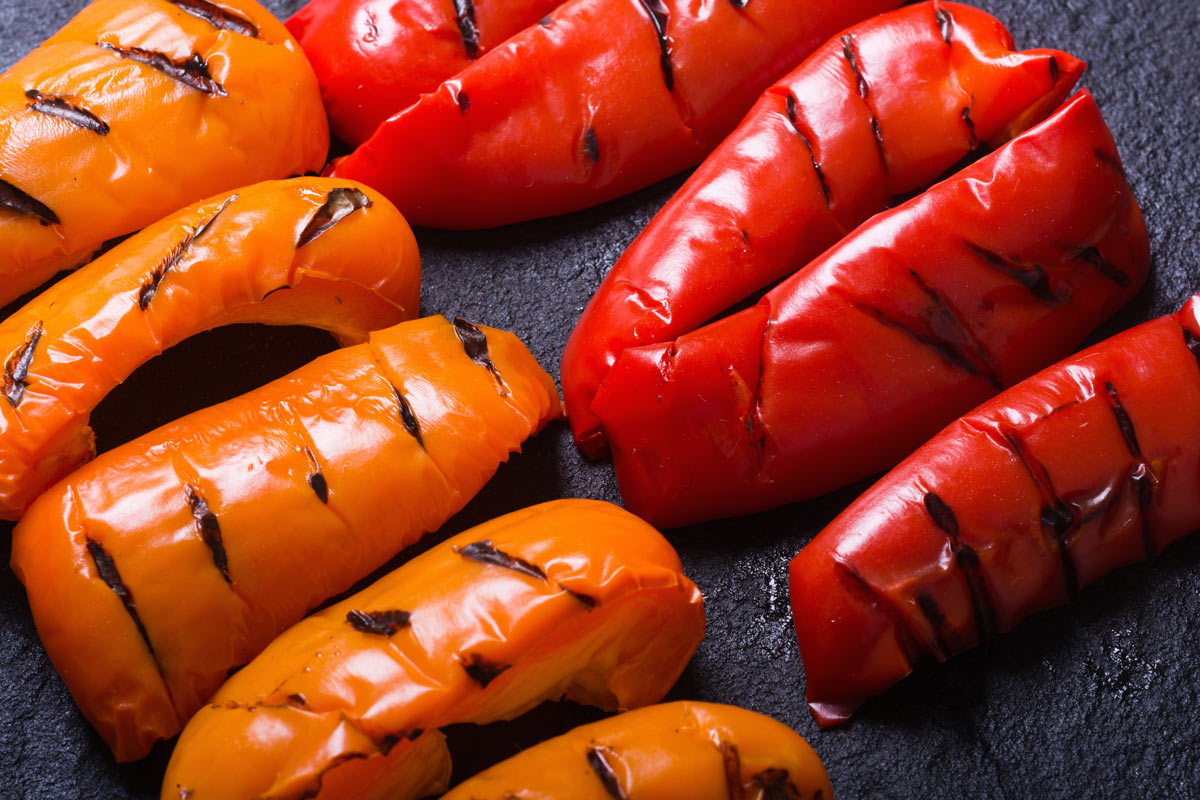Very Berry Chocolate Bars Recipe, Spotlight on Dark Chocolate, The Differences Between Dark and Milk Chocolate, Melting Chocolate in the Microwave, Outdoor Exercise and Air Quality
Healthy foods aren’t only about whole grains and vegetables. Some can satisfy a sweet tooth, too. That’s because foods like berries and dark chocolate have a wide category of nutrients called flavonoids. Read about newly discovered benefits in the first research piece I’m sharing…then indulge in one of these chocolate bars! With summer upon us, it can be enjoyable to exercise outdoors, but air quality could be a concern. The tips below will help you make smart choices.
Very Berry Chocolate Bars
 Very Berry Chocolate Bars
Very Berry Chocolate BarsOlive oil enhances dark chocolate by adding a fresh, slightly herbal taste. Raspberries and pistachios add layers of flavor and texture. Tip: Blueberries and almonds are another great combo.
Ingredients
- 3 ounces raspberries
- 8 ounces dark chocolate discs or pieces, preferably 70% cacao
- 2 tablespoons extra virgin olive oil
- 1 ounce shelled, unsalted pistachios
Directions
Step 1
Rinse the raspberries and pat dry with paper towels; set aside.
Step 2
Melt 6 ounces of the chocolate in a glass bowl placed over simmering (not boiling) water, stirring with a silicone whisk or spatula until fully melted. Carefully remove the bowl from the heat and place on a towel or hot pad on your counter. A few pieces at a time, add in the rest of the chocolate. This tempers it, or brings it down in temperature, so that the finish of the chocolate bars will be shiny. (If you have an instant-read thermometer, the chocolate on the stove should reach about 118°F and go down to 90°F after you add in the rest.) Stir in the olive oil until fully incorporated.
Step 3
Line a cookie sheet with waxed paper. Pour out the tempered chocolate in three sections and use an offset spatula to smooth each one out to a 4-by-3-inch rectangle (don’t worry about being too exact).
Step 4
Sprinkle equal amounts of raspberries and pistachios on each bar. Let the chocolate harden in a cool spot for two or more hours, then use a spatula to transfer to a glass container. Store in the fridge and enjoy within 3 days.
Yields 3 bars

Healthy Ingredient Spotlight
The Differences Between Dark and Milk Chocolate
Each type of chocolate has its fans, with some people loving both. But for the better nutritional profile, dark is the winner. First, it tends to have less sugar, though there are sugar-free versions of both. Second, dark chocolate is vegan friendly since it doesn’t contain any milk solids—it’s naturally dairy free. Another edge: it has up to two or three times the antioxidants called flavanols, a type of flavonoid, found in milk chocolate (see For Your Best Health below to learn why that matters). This is thanks to its higher percentage of cocoa solids or cacao, so always look for labels that give this information. There’s no FDA-mandated minimum of cocoa solids for dark chocolate, but many makers list this along with a description of the chocolate’s flavor profile, which is important for bakers. Those cocoa solids also give dark chocolate a much richer flavor than milk chocolate.


Quick Kitchen Nugget
Melting Chocolate in the Microwave
This is an easy way to melt chocolate without using the stovetop: Place three-quarters of the needed amount in a microwave-safe bowl and microwave on the 50% setting for 30 seconds to 1 minute at a time, checking between bursts. When the chocolate has melted, add the reserved chocolate to the bowl, let it sit for a minute, then fold it together with a spatula. As the additional chocolate melts, it will also bring down the temperature of the microwaved chocolate.
Note: Chocolate melts better when it’s in smaller pieces. If you don’t want to have to chop up a block of chocolate, buy coin-shaped wafers from brands like Valrhona, Callebaut, and Guittard. Save chocolate chips for cookies because they’re made to not melt completely.

For Your Best Health
Flavonoid-rich Foods for Health

A recent study led by researchers from Queen’s University Belfast, Edith Cowan University Perth (ECU), the Medical University of Vienna, and Universitat Wien in Austria found that increasing the diversity of flavonoids in your diet—from foods like cocoa, tea, apples, and grapes as well as blueberries, strawberries, and oranges—could help prevent the development of health conditions such as type 2 diabetes, cardiovascular disease (CVD), cancer, and neurological diseases and offers the potential of living longer. Published in Nature Food, the study tracked over 120,000 participants from 40 to 70 years old for more than a decade.
ECU research fellow, first author, and co-lead of the study Benjamin Parmenter, PhD, made the initial discovery that a flavonoid-diverse diet is good for health. “Flavonoid intake of around 500 mg a day was associated with a 16% lower risk of all-cause mortality, as well as a ~10% lower risk of CVD, type 2 diabetes, and respiratory disease. That’s roughly the amount of flavonoids that you would consume in two cups of tea.”
Dr. Parmenter added that those who consumed the widest diversity of flavonoids had an even lower risk of these diseases, even when consuming the same total number of milligrams. For example, instead of just drinking tea, also enjoy berries, chocolate, and apples.
“We have known for some time that higher intakes of dietary flavonoids, powerful bioactives naturally present in many foods and drinks, can reduce the risk of developing heart disease, type 2 diabetes, and neurological conditions like Parkinson’s,” said study co-lead professor Aedín Cassidy, PhD, from the Co-Centre for Sustainable Food Systems and Institute for Global Food Security at Queen’s. “We also know from lab data and clinical studies that different flavonoids work in different ways—some improve blood pressure, others help with cholesterol levels and decrease inflammation. This study is significant, as the results indicate that consuming a higher quantity and wider diversity has the potential to lead to a greater reduction in ill health than just a single source.”
Professor Tilman Kühn, PhD, a co-lead author, noted that the importance of diversity of flavonoid intake hadn’t been investigated until now, making this study very significant, as the findings align with the belief that eating the rainbow is invaluable for maintaining good health. “Eating fruits and vegetables in a variety of colors, including those rich in flavonoids, means you’re more likely to get the vitamins and nutrients you need to sustain a healthier lifestyle,” he said.
The first-ever dietary guidelines for flavonoids were released recently, but this research goes one step further. “Our study provides inaugural evidence that we may also need to advise increasing diversity of intake of these compounds for optimal benefits,” Dr. Parmenter said.
“The results provide a clear public health message, suggesting that simple and achievable dietary swaps, such as drinking more tea and eating more berries and apples for example, can help increase the variety and intake of flavonoid-rich foods, and potentially improve health in the long term,” Dr. Cassidy added.

Fitness Flash
Outdoor Exercise and Air Quality
According to experts at ACE (American Council on Exercise), a leading certifier of fitness professionals, it’s important to know your local air quality before you go outside to exercise. When the air quality is bad, it can put your overall health at risk, cause increases in resting and exercise heart rate and blood pressure, worsen asthma, and decrease lung function and oxygen-carrying capacity. This is because, in part, your body’s natural air-filtration system process is less effective when you breathe through your mouth and more pollutants reach the lungs. This is true regardless of the cause of bad air quality, including wildfires, pollen, and even heavy traffic.
ACE has these suggestions:
- Understand the risk-reward balance between physical activity and air pollution. On some days, it may be safer to bring your workout indoors or at least reduce the intensity at which you work out.
- Pay attention to the air-quality index in your area. You can check it daily at airnow.gov.
- Be mindful of when and where you exercise. Avoid heavily trafficked roads at peak commuting times, for instance. Look at pollen reports before you go out if you’re sensitive to this allergen.
- Consider wearing a face mask. It will keep you from inhaling allergens and pollutants without impacting your performance.









